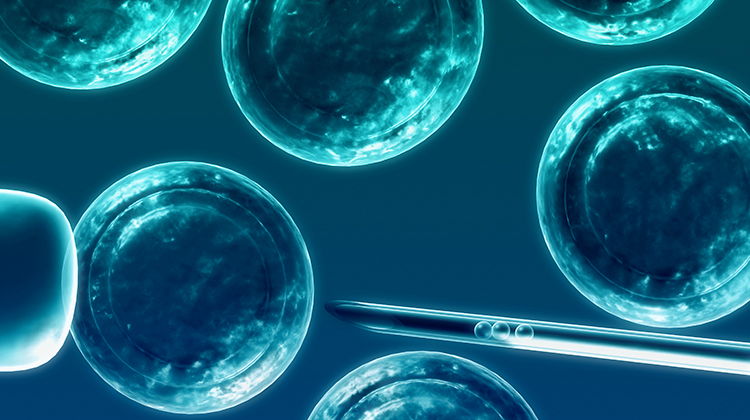Stem Cell Therapies for AMD Making Strides

In 2013, the first clinical study of stem cells in ophthalmology set high hopes that companies may one day develop cell-based therapies for neovascular age-related macular degeneration (AMD). A recent spate of clinical and intellectual advances certainly hasn’t dampened anyone’s enthusiasm.
Research scientists continue to focus on replacement therapy for the retinal pigment epithelium (RPE) and retinal progenitor cells, combining stem cell and gene therapy, tissue engineering, and the mobilization of tissue-specific stem cells in the human retina.
In AMD, the RPE stops functioning, resulting in the death of photoreceptors and a loss of central vision. Although anti-VEGF treatments can be effective against wet AMD, they aren’t a cure, and no treatments are available for dry AMD. Anti-VEGF therapy may even increase the risk of geographic atrophy, the advanced form of dry AMD.
- Also, at the Association for Research in Vision and Ophthalmology (ARVO) 2016 meeting, the results of proof-of-concept studies of a stem cell patch designed to protect AMD patients against vision loss were reported by the National Eye Institute’s Kapil Bharti, PhD. The patch, which was tested in pigs, contained RPE cells differentiated from the stem cells of three AMD patients. The NEI team inserted the patch into the retinas of pigs with laser-induced RPE atrophy and photoreceptor cell degeneration. Using optical coherence tomography, Dr. Bharti and his team confirmed that the patch can rescue photoreceptor cells from degeneration in this animal model, providing the data needed to initiate a Phase I clinical trial of the patch in AMD patients.
- In September 2015, Moorfields Eye Hospital in London announced the start of a clinical trial investigating the safety and efficacy of transplanting a stem-cell derived RPE patch behind the retina. The first surgery was successfully performed on a patient in August 2015 without complications. Each patient in the trial will be followed for a year to assess the safety and stability of the cells and whether there is an effect in restoring vision. A representative of Moorfields stated the investigators expect to have more information on the progress of the trial in the coming months.
- And in May, SanBio (Mountain View, CA) announced that it had been granted a key US patent covering its proprietary modified stem cells, SB623, for the treatment of retinal degeneration, which includes AMD and retinitis pigmentosa. The company has not released any further information on the state of the research.
The first Japanese clinical study used induced pluripotent stem cells (iPSCs) for six individuals with advanced AMD. Japanese researcher Shinya Yamanaka received the 2012 Nobel Prize for the discovery of iPSCs, which are derived from mature differentiated cells reprogrammed to become pluripotent.
Now researchers are exploring different methods to deliver stem cells to the eye. In one approach, a one-cell-thick layer of RPE cells derived from human embryonic stem cells or adult RPE stem cells is implanted in the eye. Another delivery method showing promise is a suspension of cells injected into the eye under the retina.
In 2014, Japanese scientists completed a successful skin-to-eye stem cell transplant in a 70-year-old wet AMD patient as part of a pilot study. At the ARVO 2016 meeting, Yakuo Kurimoto and colleagues announced that two years after the initial treatment, the transplanted stem cells had survived without any adverse events or immune rejection for a year and a half. The researchers stated that “Visual acuity was preserved without additional anti-AMD therapy such as intravitreal injection of anti-VEGF drug.”
Look for updates on this research in upcoming Eye On Innovation newsletters.
Contributed By Michael Smolinsky, PhD, Chief Content Officer – Ethis Communications
